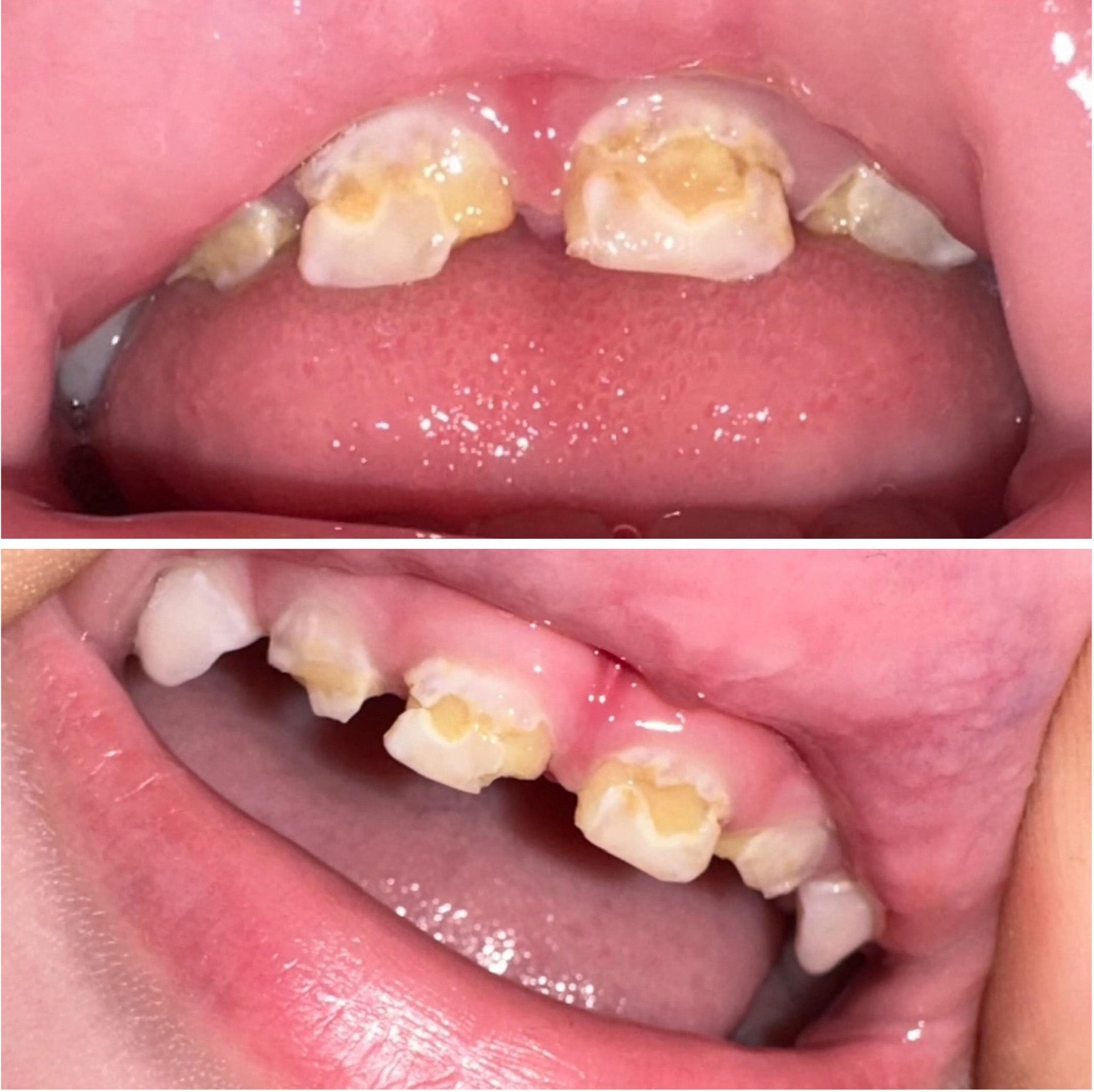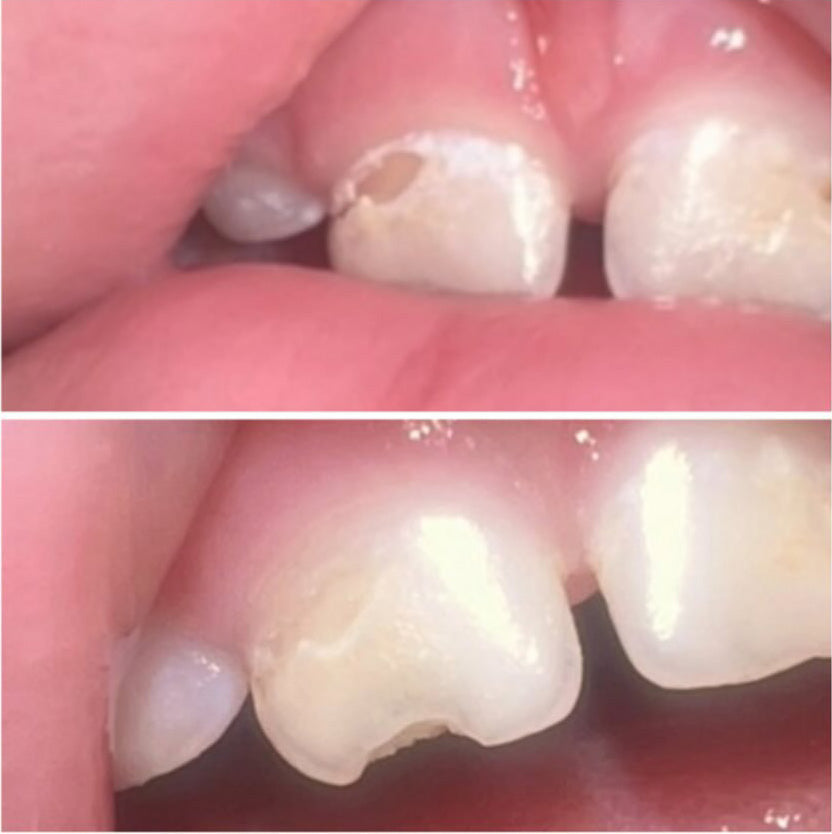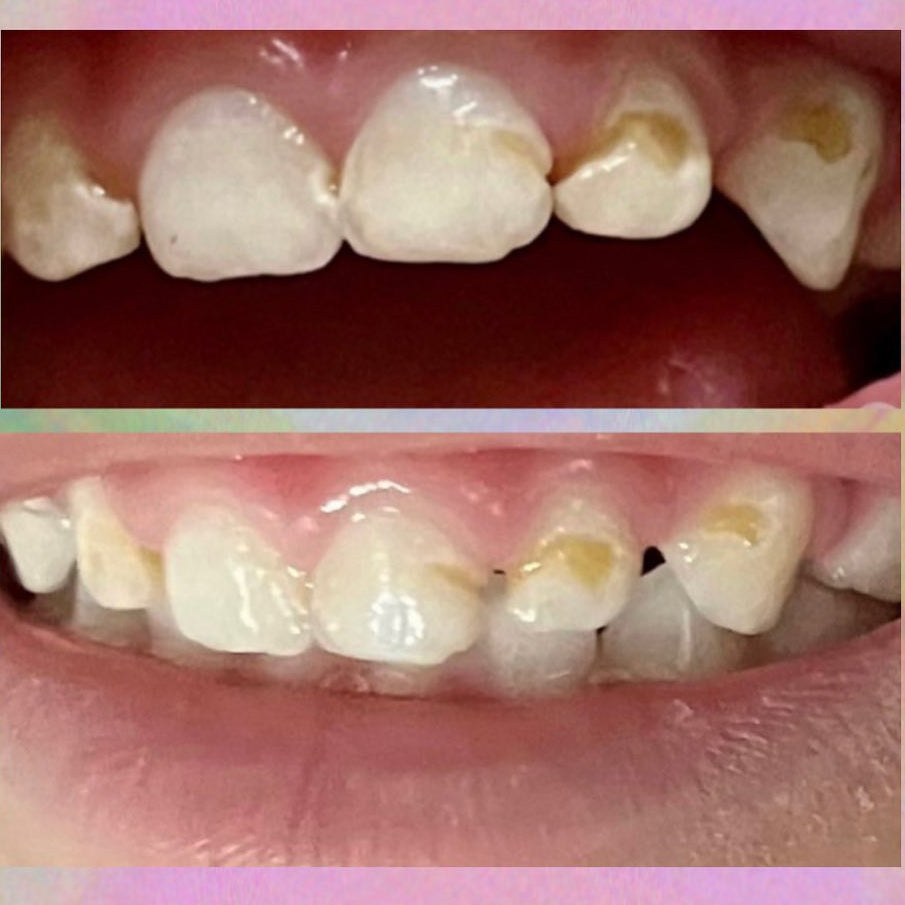Why we use micro hydroxyapatite
instead of nano
instead of nano
We have found micro to be just as effective and feel safer using hydroxyapatite in a more natural size. Nano HA is so small that you need an electron microscope to view it!
Hydroxyapatite is is the chemical name for a molecule made up of calcium, phosphorus, oxygen, and hydrogen. Since it shows up as a pair in nature, it’s commonly notated as Ca10(PO4)6(OH)2. The word ‘hydroxyapatite’ is abbreviated as HA.
The HA molecule is very important for oral care. It’s the primary building block found in tooth enamel, dentin, and bone. When you brush your teeth with hydroxyapatite, it fills in tiny holes and scratches on the tooth surface. This process helps rebuild enamel and can prevent cavities. Research shows that hydroxyapatite protects against tooth decay just as well as (and sometimes even better than) fluoride.
However, like so many things in life, not all hydroxyapatites are created equal. The quality, quantity, and particle size of a product’s hydroxyapatite make a difference. With recent debates about the risks vs. benefits of nano-sized hydroxyapatite, we decided to provide more information so you can make up your own mind on this subject.
Hydroxyapatite can come in many different particle sizes. For medical, dental, and oral supplement applications, particle sizes range from about 800 micrometers all the way down to 10 nanometers (80,000 times smaller). Millimeters are the smallest marks on a US/metric ruler. 10 millimeters = 1 centimeter, which is about ⅓ of an inch. There are 1000 micrometers in a millimeter, and there are 1000 nanometers in 1 micrometer 🧐. So, that means that there are one million nanometers in one millimeter!!
This leads us to the 2 types of Hydroxyapatite; micro and nano. Nano is one thousand times smaller than micro. Nano-hydroxyapatite and micro-hydroxyapatite both work to repair tooth enamel and reduce sensitivity. To ensure optimal mouth absorption, maintaining a small particle size is crucial. This promotes suspension in saliva, enhancing mineral delivery to teeth.
At Bliss we use Coral hydroxyapatite (CHA). It is a calcium phosphate material made from the calcium carbonate skeleton of coral that is used in medical procedures. It is biocompatible and osteoconductive, meaning it can be used as a bone graft substitute or to fill bone voids. CHA is also used as an ocular implant and in foot procedures. Hydroxyapatite [Ca10 (PO4)6(OH)2], a calcium phosphate group, is a major component accounting for 97% of teeth enamel and 65% of bone. Most apatite is a chemical synthetic substance refined from calcium originating in ore mineral such as limestone. Coral Apatite is the world’s only apatite manufactured from the natural material of Yonaguni fossil coral and is produced by our proprietary technology.
We use this the finest particle size our team can mechanically produce, micro hydroxyapatite. Why are we not using the smallest possible particle size?
Bliss Energetics focuses on natural, holistic healing! Nanoparticles are synthetically produced (not naturally derived). When we go from micrometers to nanometers, we have to think about what might happen in the body if we use an ingredient with such a tiny particle size (you can’t even see a nano particle under a standard microscope!). This tiny particle size allows the molecule to easily migrate throughout the body (for example, across the blood-brain barrier and even into the cellular structure), and literature suggest that this is not safe.
Our foremost concern is staying true to our principles. We opted for the 'precautionary principle' to steer clear of nano-HA until its long-term safety is assured.
European Union plans to ban several nano-sized materials (including nano-HA) for use in cosmetic and oral hygiene applications: Link to the full report on nano-HA from the EU’s Scientific Committee on Consumer Safety (SCCS).
The SCCS is concerned about the potential for nano-HA to damage cell DNA. The term referenced is ‘genotoxic potential’, which means the possibility for something (nano-HA) to damage the genetic information within a cell, causing mutations that may lead to cancer. The SCCS states, “Having considered the data provided, and other relevant information available in scientific literature, the SCCS cannot conclude on the safety of the hydroxyapatite composed of rod-shaped nanoparticles for use in oral-care cosmetic products at the maximum concentrations and specifications given in this Opinion. This is because the available data/information is not sufficient to exclude concerns over the genotoxic potential of HAP-nano.”
Their reluctance seems valid for other reasons! There are studies that suggest nano-HA may cause cellular breakdown in kidney cells and that it may even have a negative impact on human blood cells.
For these reasons Bliss Energetics has chosen to put our customers health first and not use nano-HA!! In section 3.3.4 Assessment of the systemic toxicity of the non nanoform of HAP, the report states, “Calcium phosphate is a common mineral on earth and the most common calcium phosphate mineral is hydroxyapatite. Calcium phosphates have been generally recognized as safe (GRAS) in food by the FDA in 1975. Calcium phosphate is highly biocompatible in contact with hard tissue because the body is well accustomed to this mineral.”
So, in other words, we can still benefit from using hydroxyapatite without the risks of using nanoparticles!
We are not aware of any research studies comparing different sizes of HA against one another. Here is a study that mentions both micro-HA and nano-HA, but it does not contain information or data that compares the efficacy of various particle sizes of HA.
Here is a fantastic trial that shows for the first time that, in children, the impact of the daily use of a toothpaste with microcrystalline hydroxyapatite on enamel caries progression in the primary dentition is not inferior to a fluoride control toothpaste.
Need more? This study compares micro-HA to fluoride. The researchers studied individuals with a group that’s at high risk for decay, those with braces....
“In highly caries-active patients, the impact of the regular use of a microcrystalline HAP dentifrice [toothpaste] on caries [cavities] progression is not significantly different from the use of a 1400 ppm fluoride toothpaste.”
This might not sound great at first glance but, the data shows that the participants who used a micro-HA toothpaste have less decay than those who used a fluoride-based toothpaste!!!
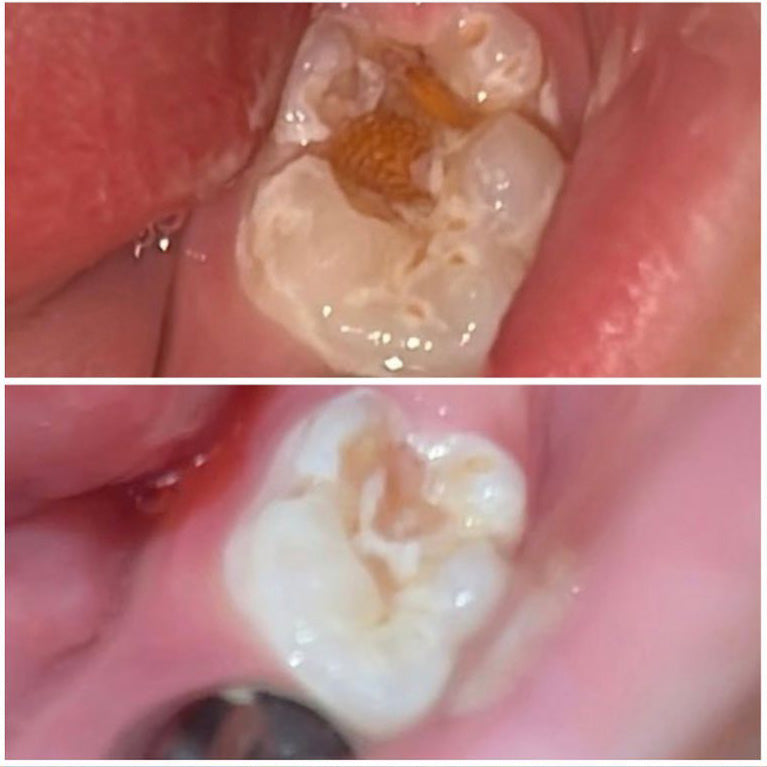
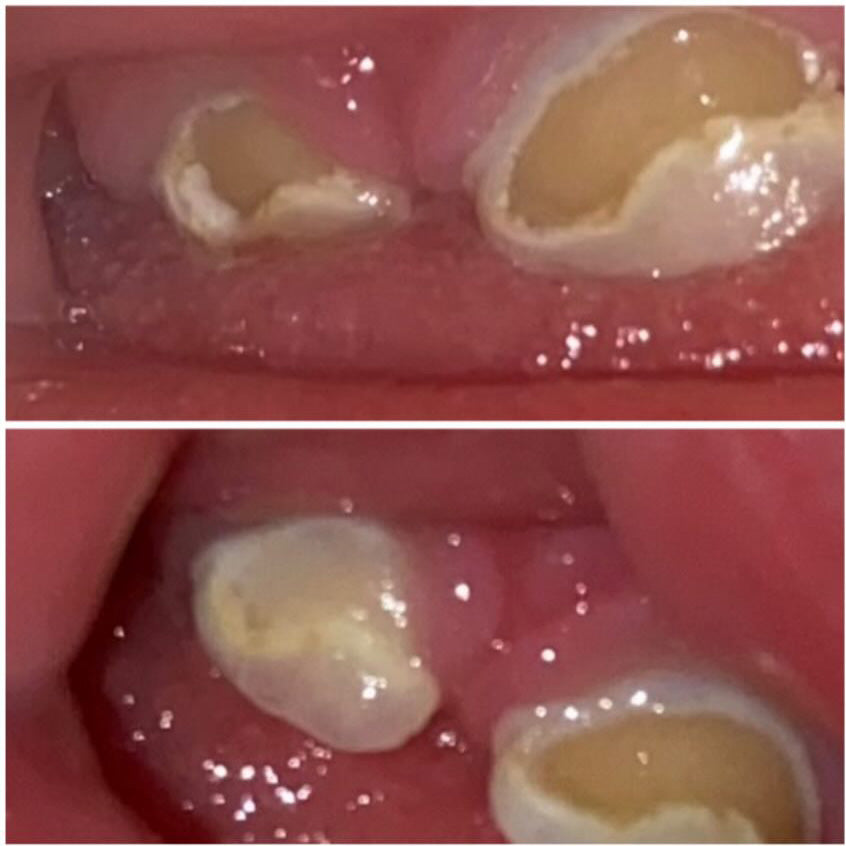
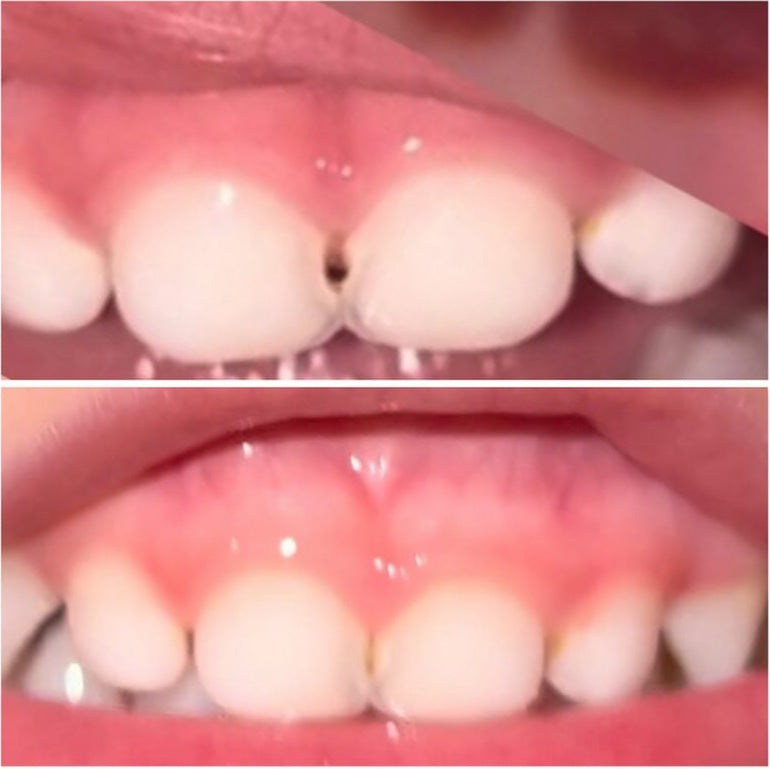
Are the benefits of using nano-HA greater than the risks? We don't think so, but that is totally a personal call. We hope this information helps you to make educated decisions!
We are so thankful to our many customers that share their personal journey with us through testimonials and photos that we receive on a regular basis.
